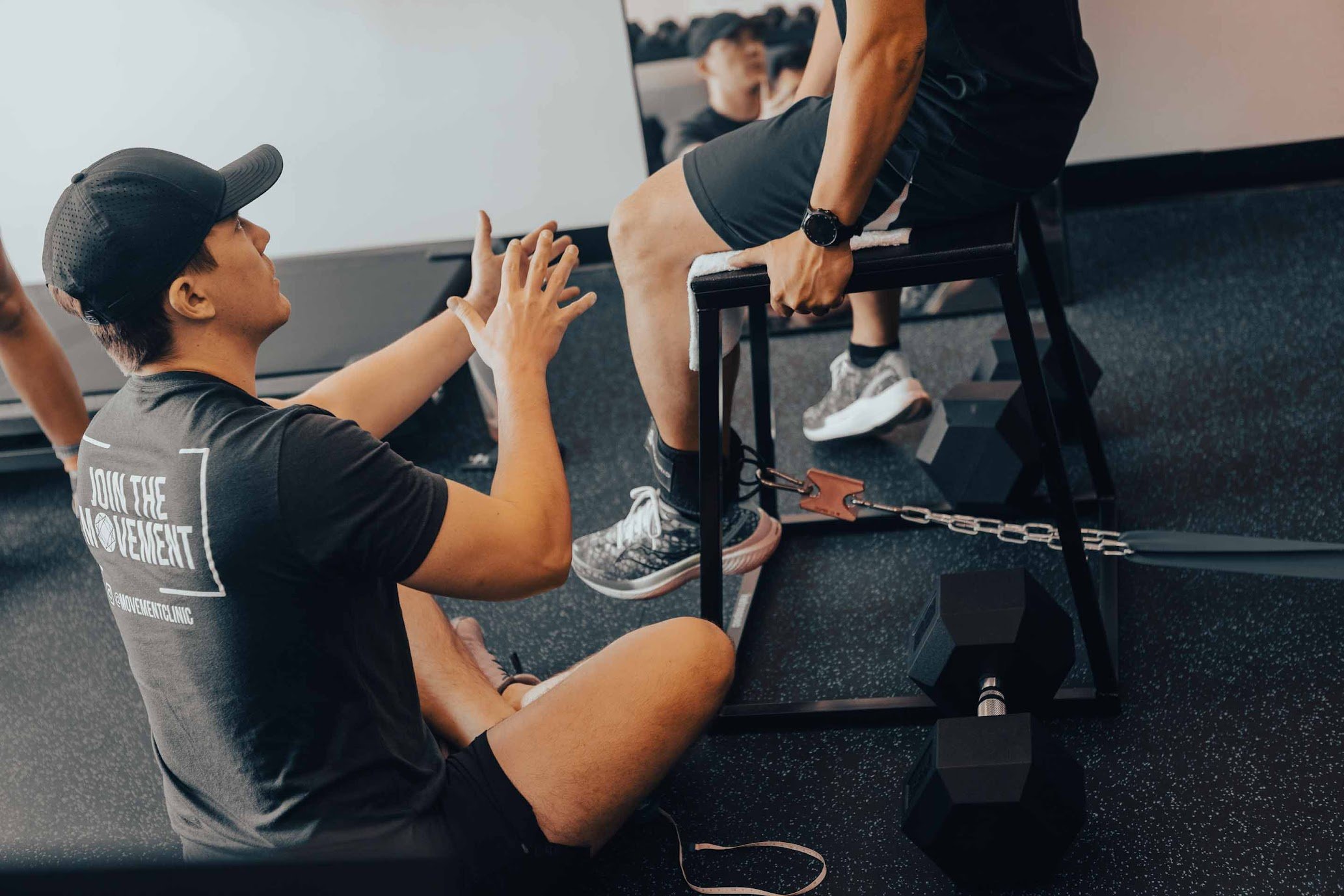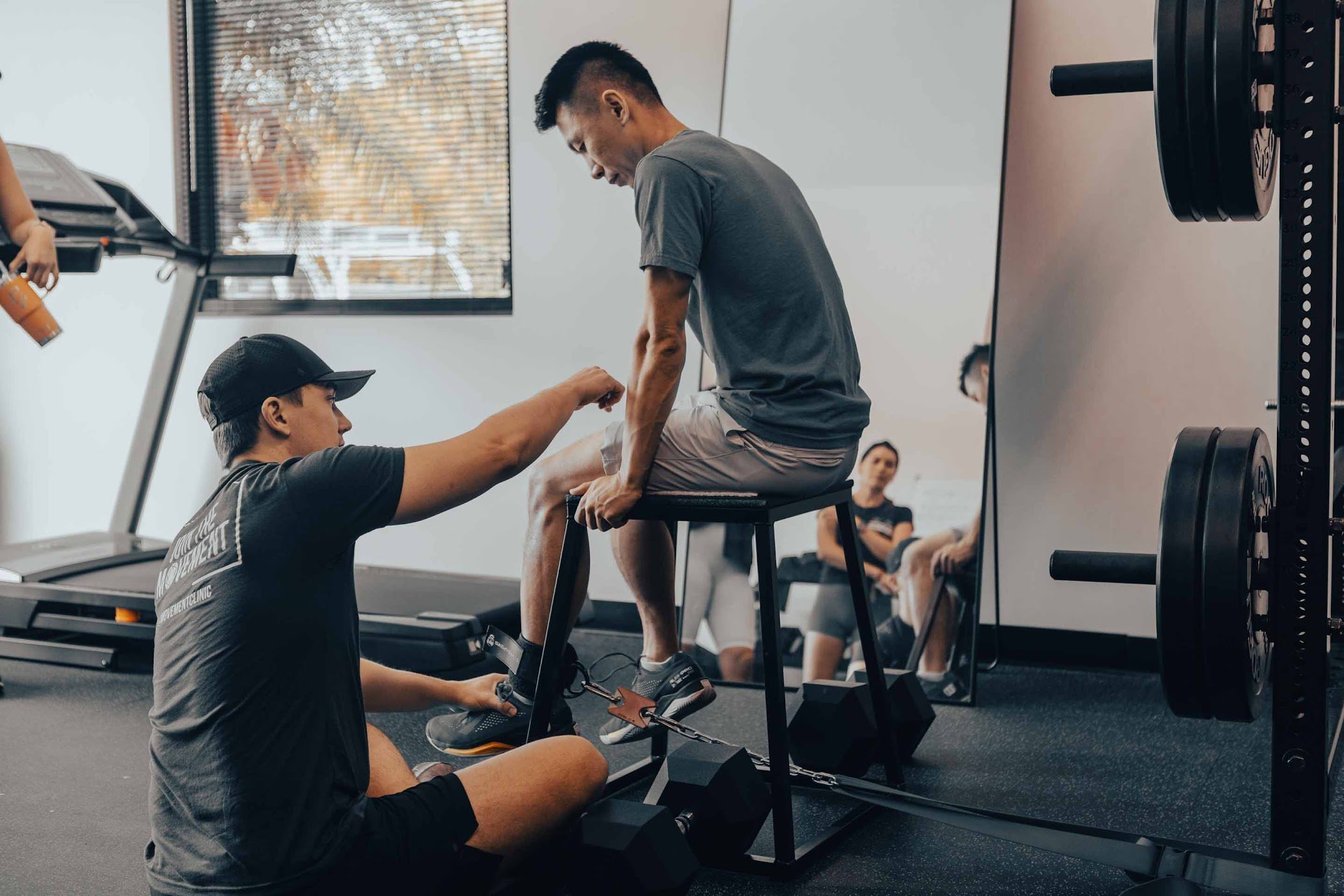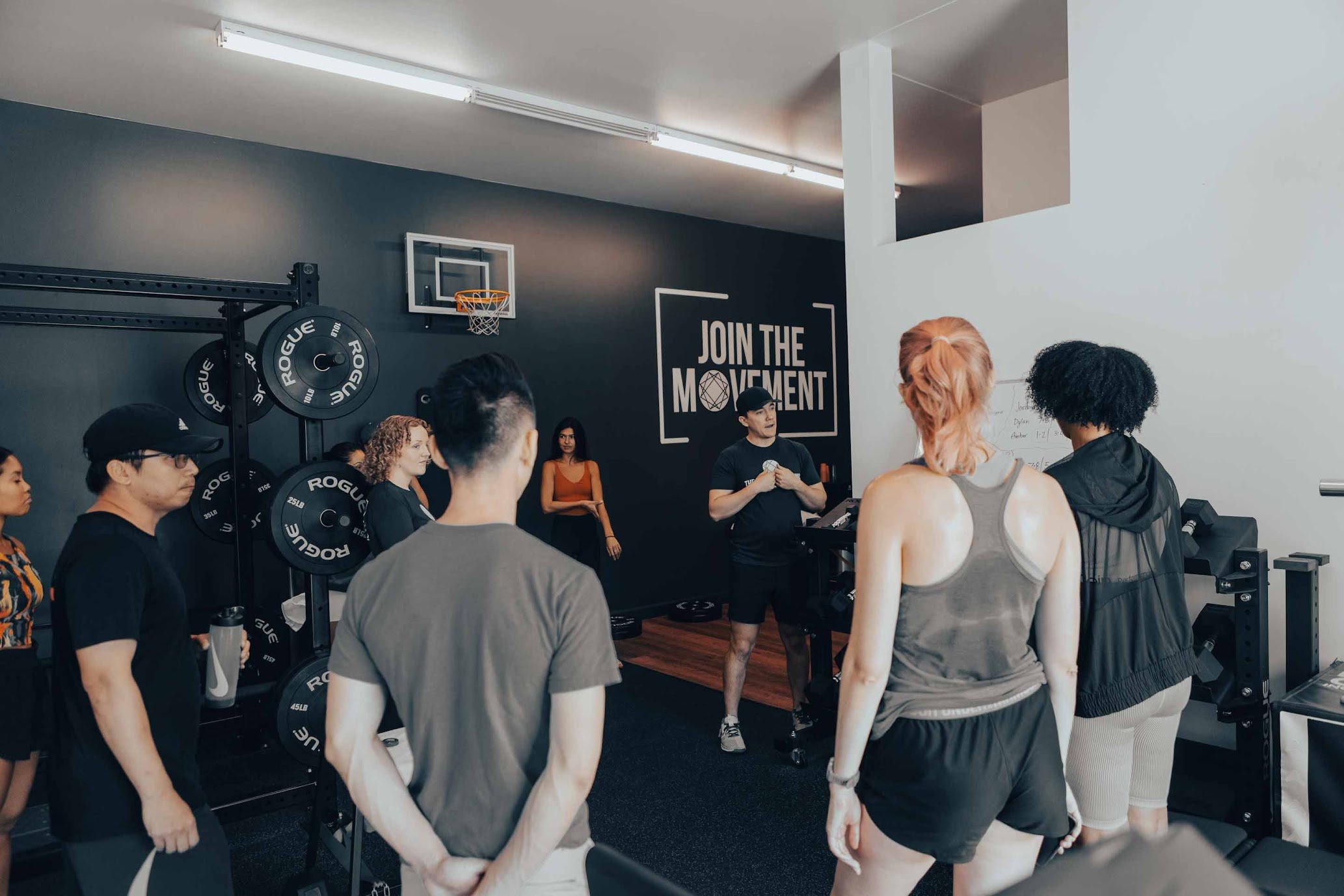The Ultimate Guide to Performance Physical Therapy: How to Move Better and Recover Faster
Injury recovery and peak performance often feel like two separate goals—one focused on rehabilitation and the other on physical excellence. However, integrating functional training with physical therapy bridges this gap, allowing individuals to recover faster while simultaneously improving their strength, mobility, and resilience.
At The Movement Clinic in Pasadena, we believe in a holistic approach to rehabilitation and performance. Rather than treating injuries in isolation, we incorporate functional training to help patients regain optimal movement patterns and prevent future setbacks. This method doesn’t just get you back to where you were before—it helps you move better, feel stronger, and perform at your highest level.
READ: The Role of Strength Training in Physical Therapy: Building Resilience and Preventing Injury
In this guide, we’ll explore how functional training and physical therapy work together to accelerate recovery, enhance movement quality, and maximize athletic performance. Whether you’re an athlete coming back from an injury or someone looking to prevent future limitations, this approach can help you achieve long-term success.
What Is Functional Training?
Functional training is a movement-based exercise approach designed to improve strength, mobility, and coordination in ways that directly translate to daily activities and sports performance. Unlike traditional strength training, which often isolates muscles through repetitive motions, functional training focuses on movement patterns that engage multiple muscle groups simultaneously.
Key Principles of Functional Training:
Movement Over Muscles – Rather than targeting individual muscles, functional exercises emphasize movement patterns like squatting, lunging, hinging, and rotating.
Core Stability – A strong and stable core is essential for nearly every movement, from lifting to running. Functional training incorporates exercises that build core strength for better balance and injury prevention.
Mobility and Flexibility – Improving joint mobility and muscle flexibility enhances movement efficiency and reduces injury risk.
Multi-Planar Movement – Life and sports happen in multiple directions, so functional training includes exercises that move through different planes (forward, backward, lateral, and rotational).
Injury Prevention and Longevity – By strengthening movement patterns, functional training helps protect the body from future injuries and improves overall longevity.
Common functional training exercises include kettlebell swings, medicine ball throws, resistance band movements, and bodyweight exercises like push-ups and squats. When combined with physical therapy, these exercises become a powerful tool for restoring movement and enhancing performance.
READ: Optimizing Recovery with Physical Therapy After Surgery: Restoring Function and Mobility
The Role of Physical Therapy in Injury Recovery
Physical therapy plays a crucial role in helping individuals recover from injuries, manage pain, and restore optimal movement. Whether you’re dealing with an acute sports injury, chronic pain, or post-surgical rehabilitation, physical therapy focuses on identifying movement dysfunctions and correcting them to ensure a full recovery.
Common Injuries Treated with Physical Therapy:
Sprains and Strains – Soft tissue injuries that require mobility restoration and strength rebuilding.
Tendonitis and Overuse Injuries – Conditions like Achilles tendonitis or tennis elbow benefit from targeted therapy to reduce inflammation and restore function.
Post-Surgical Rehabilitation – Structured therapy is essential after procedures like ACL reconstruction, rotator cuff repair, or spinal surgeries.
Lower Back and Joint Pain – Chronic pain in the back, knees, or shoulders often stems from poor movement patterns that therapy can help correct.
READ: Physical Therapy for Shoulder Injuries: Regaining Strength and Mobility
How Physical Therapy Restores Movement and Prevents Future Injuries
A well-designed physical therapy program doesn’t just aim to relieve pain—it focuses on long-term movement efficiency and injury prevention. Some of the key elements of physical therapy include:
Manual Therapy Techniques – Hands-on approaches like soft tissue mobilization, joint manipulation, and myofascial release to improve movement.
Corrective Exercises – Strength and mobility drills tailored to address muscle imbalances and faulty movement patterns.
Neuromuscular Re-education – Training the body to move correctly and efficiently to reduce injury risk.
Progressive Loading – Gradually increasing movement challenges to rebuild strength and resilience without re-injury.
By addressing the root cause of movement dysfunctions, physical therapy helps individuals recover stronger and more resilient than before, setting the stage for integrating functional training into their rehabilitation process.
How Functional Training Complements Physical Therapy
Recovering from an injury isn’t just about regaining mobility—it’s about restoring strength, movement efficiency, and resilience to prevent future setbacks. This is where functional training enhances physical therapy, bridging the gap between rehabilitation and peak performance.
READ: Physical Therapy for Shoulder Injuries: Regaining Strength and Mobility
1. Improving Strength, Mobility, and Movement Efficiency
Physical therapy helps restore basic movement patterns, but functional training reinforces these patterns under load and in real-world conditions. By incorporating dynamic, multi-joint movements, functional training builds strength in ways that translate directly to daily activities and athletic performance.
Example: A patient recovering from knee surgery may start with basic range-of-motion exercises in physical therapy. Functional training then progresses them to squats, lunges, and balance drills to restore full function and reduce re-injury risk.
2. Reducing the Risk of Re-Injury
Many injuries occur due to poor movement mechanics, muscle imbalances, or lack of stability. Functional training targets these weaknesses by incorporating exercises that improve:
Core stability – Reducing strain on the lower back and joints.
Proprioception (body awareness) – Enhancing balance and coordination.
Joint mobility and flexibility – Ensuring unrestricted, pain-free movement.
Example: A runner with chronic ankle sprains can benefit from single-leg stability exercises, agility drills, and resistance band work to improve ankle strength and prevent future injuries.
By combining rehabilitative therapy with progressive functional training, patients at The Movement Clinic in Pasadena experience a smoother, faster, and more effective recovery—one that doesn’t just return them to baseline but helps them perform better than before.
Who Can Benefit from This Approach?
The combination of functional training and physical therapy isn’t just for athletes—it’s for anyone looking to recover from injuries, prevent future setbacks, and optimize movement quality. Whether you’re healing from surgery or simply aiming to move better, this approach is tailored to meet your needs.
READ: Strength Training and Injury Prevention: How Physical Therapy Supports Athletes
1. Athletes Recovering from Injuries
For athletes, returning to play after an injury requires more than just basic rehab. Functional training ensures a safe and effective transition back to high-intensity movements while reducing the risk of re-injury.
Example: A basketball player recovering from an ankle sprain can use functional training to restore lateral quickness, stability, and explosive power.
2. Active Individuals Looking to Prevent Injuries
If you engage in activities like running, weightlifting, or recreational sports, functional training can help you improve movement mechanics, increase resilience, and prevent overuse injuries.
Example: A runner experiencing knee pain can benefit from hip and core strengthening exercises to improve stride mechanics and reduce strain on the joints.
3. People with Chronic Pain or Movement Limitations
Many chronic pain issues, such as lower back pain or joint discomfort, stem from poor movement patterns and muscle imbalances. Functional training retrains the body to move more efficiently, reducing pain and improving daily function.
Example: A desk worker with chronic back pain can integrate postural training, core stabilization, and mobility work to alleviate discomfort.
By tailoring functional training to each individual’s needs, The Movement Clinic in Pasadena helps patients of all backgrounds move, feel, and perform at their best.
READ: How Physical Therapy Helps Prevent Knee Injuries in Athletes
The Science Behind Functional Training and Rehabilitation
The combination of functional training and physical therapy isn’t just a trend—it’s backed by scientific research that highlights its effectiveness in injury recovery, movement optimization, and long-term performance.
1. Research-Backed Benefits of Functional Training in Rehab
Studies have shown that functional, multi-joint movements improve overall strength and mobility more effectively than isolated exercises. Research also indicates that progressive, movement-based rehab reduces the likelihood of re-injury by reinforcing proper biomechanics.
Example: A study published in the Journal of Orthopaedic & Sports Physical Therapy found that patients recovering from ACL surgery had better long-term outcomes when incorporating functional strength training into their rehab programs.
2. The Role of Neuromuscular Training
Functional training enhances neuromuscular control, which is essential for reducing injury risk and improving performance. By training the mind-muscle connection, individuals develop better coordination, balance, and movement efficiency.
Example: A physical therapy program that includes single-leg stability drills and core activation exercises has been shown to reduce ankle sprains and knee injuries in athletes.
3. Case Studies and Expert Insights
Sports rehabilitation specialists and movement science researchers emphasize that rehab should closely mimic real-world movement demands. Traditional rehabilitation methods that focus solely on passive treatments or isolated exercises often lead to a slower and less complete recovery.
Example: A case study on professional soccer players demonstrated that integrating functional movement drills into post-injury rehab significantly improved return-to-play timelines compared to standard rehab approaches.
By combining physical therapy with functional training, The Movement Clinic in Pasadena ensures that patients receive a science-driven, results-oriented approach to recovery and performance.
READ: The Role of Physical Therapy in Improving Athletic Performance
What to Expect from a Performance Physical Therapy Program
At The Movement Clinic in Pasadena, our performance physical therapy approach is designed to take patients beyond basic rehabilitation. By integrating functional training, we ensure that each patient not only recovers from injury but also moves better, feels stronger, and performs at their peak.
1. Comprehensive Evaluation and Personalized Treatment Plan
Every patient starts with a thorough assessment to identify movement limitations, muscle imbalances, and injury history. This helps us create a customized treatment plan that aligns with their recovery goals and performance needs.
Example: A runner recovering from IT band syndrome undergoes a gait analysis to pinpoint mechanical inefficiencies and receives a structured strength and mobility program tailored to their sport.
2. Progression from Rehab to Functional Movement Training
Our programs follow a structured progression model, ensuring that patients gradually build strength, stability, and mobility as they recover.
Phase 1: Pain management and basic mobility restoration.
Phase 2: Strength-building through targeted exercises.
Phase 3: Dynamic functional training to restore full movement capacity.
Phase 4: Sport- or activity-specific drills to maximize performance and prevent re-injury.
Example: A weightlifter recovering from a shoulder injury moves from isometric strengthening drills to functional overhead movement patterns before safely returning to heavy lifting.
READ: Hit the Ground Running! Getting back to running after an injury
3. Integration into Daily Activities and Sports Performance
The final phase of recovery ensures that patients confidently return to their normal activities, whether that’s competitive sports, fitness routines, or everyday movements. Our therapists provide:
Education on proper movement mechanics.
Customized home exercise programs for continued progress.
Guidance on injury prevention strategies to maintain peak performance.
By the end of the program, patients leave with better movement efficiency, enhanced strength, and a lower risk of future injuries, allowing them to perform at their best—pain-free.
Why Choose The Movement Clinic in Pasadena?
When it comes to recovering from injuries and optimizing movement performance, choosing the right provider makes all the difference. At The Movement Clinic in Pasadena, we go beyond traditional rehabilitation by integrating cutting-edge physical therapy with functional training, ensuring that our patients experience faster recovery, improved movement quality, and long-term injury prevention.
1. Expert Team and Personalized Care
Our clinic is led by experienced physical therapists and movement specialists who take a hands-on, individualized approach to care. We assess each patient’s unique needs and design a customized rehab and training program that aligns with their goals.
What sets us apart:
One-on-one, patient-focused sessions.
Holistic treatment plans that incorporate manual therapy, corrective exercises, and functional movement training.
Evidence-based techniques to ensure effective and lasting results.
READ: Pasadena Physical Therapy Guide for Athletes and Weekend Warriors
2. State-of-the-Art Approach to Recovery and Performance
We don’t just treat symptoms—we identify and correct the root cause of movement dysfunctions to create a long-term solution. Our approach includes:
Movement assessments to pinpoint inefficiencies.
Progressive rehabilitation techniques that transition seamlessly into performance training.
Advanced recovery methods, including soft tissue work and neuromuscular re-education.
3. Proven Success with Athletes and Active Individuals
Our performance-driven rehabilitation programs have helped athletes, weekend warriors, and fitness enthusiasts return to the activities they love—stronger than before.
Success story example: A local triathlete struggling with chronic knee pain was able to restore full function, build strength, and return to competition pain-free through our integrated rehab and training program.
By choosing The Movement Clinic in Pasadena, you’re not just getting physical therapy—you’re investing in a complete recovery and performance solution designed to keep you moving at your best.
READ: Safeguarding Your Fitness Journey and Avoiding Injuries
Take the next step
Recovering from an injury and achieving peak performance don’t have to be separate goals. By combining physical therapy with functional training, you can recover faster, move better, and build long-term resilience against future injuries. Whether you’re an athlete returning to competition or someone looking to improve daily movement, this integrated approach provides the best path to success.
At The Movement Clinic in Pasadena, we specialize in performance-driven rehabilitation designed to help you regain strength, mobility, and confidence in your movement. Our expert team is here to guide you through every step of the recovery process, ensuring that you return to your favorite activities feeling stronger than ever.
Ready to take the next step? Contact The Movement Clinic today to schedule an assessment and start your journey toward pain-free movement and peak performance.




